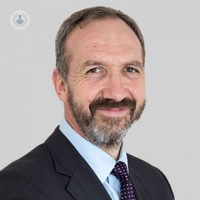Keeping the pace: an insight into pacemakers and cardiac resynchronisation therapy
Written by:A conventional pacemaker is used for patients whose heart beats too slowly, and it's simply there to add in enough heartbeats to ensure that the patient has an adequate heart rate. It's composed of a pacemaker box or generator, which is implanted under the skin, usually on the left hand side of the chest through an incision of around three centimetres in length, and which is then connected to, in a conventional system, one or two wires which are positioned within the heart. In the case of a particular type of pacemaker, called a cardiac resynchronisation therapy or CRT pacemaker, there are three wires positioned in the heart.

How is a conventional pacemaker implanted?
The conventional pacemaker implant procedure lasts somewhere in the order of three quarters of an hour to an hour, and it's performed under a local anaesthetic, so the patient can generally then wait in hospital for a few hours afterwards, and be discharged home in the same day with some simple painkillers. There are some routine checks performed before the patient goes home, which are all performed outside the body, so there's no further incisions required, and the patient would generally have a simple chest X-ray performed. Simple pacemakers have a battery life in the modern era of somewhere in the region of ten years, or sometimes more.
When is cardiac resynchrinisation therapy used?
Cardiac resynchronisation therapy is used for patients whose heart function is significantly reduced. One of the issues with such patients is that as well as the function being reduced, it can often be quite inefficient, so in patients who meet certain criteria, we're in a position to offer CRT to those patients and we can potentially offer them somewhere in the region of a 7 out of 10 chance of deriving a significant improvement in their day-to-day quality of life - be it how far they can walk, or how easily they can get up a flight of stairs. The pacemaker itself is implanted in a very similar way to a conventional pacemaker, but the addition of a third wire adds an additional level of complexity to the procedure that can make it quite technically challenging. Nevertheless, in somewhere in the region of 19 out of 20 patients, we can achieve a successful result and implant the pacemaker. Not all patients derive or notice a benefit from having such a pacemaker implanted. All isn't lost, however, and there are certain ways that we can reprogram the pacemaker, using certain techniques that can improve the chances of that patient deriving a benefit in their day-to-day quality of life.


